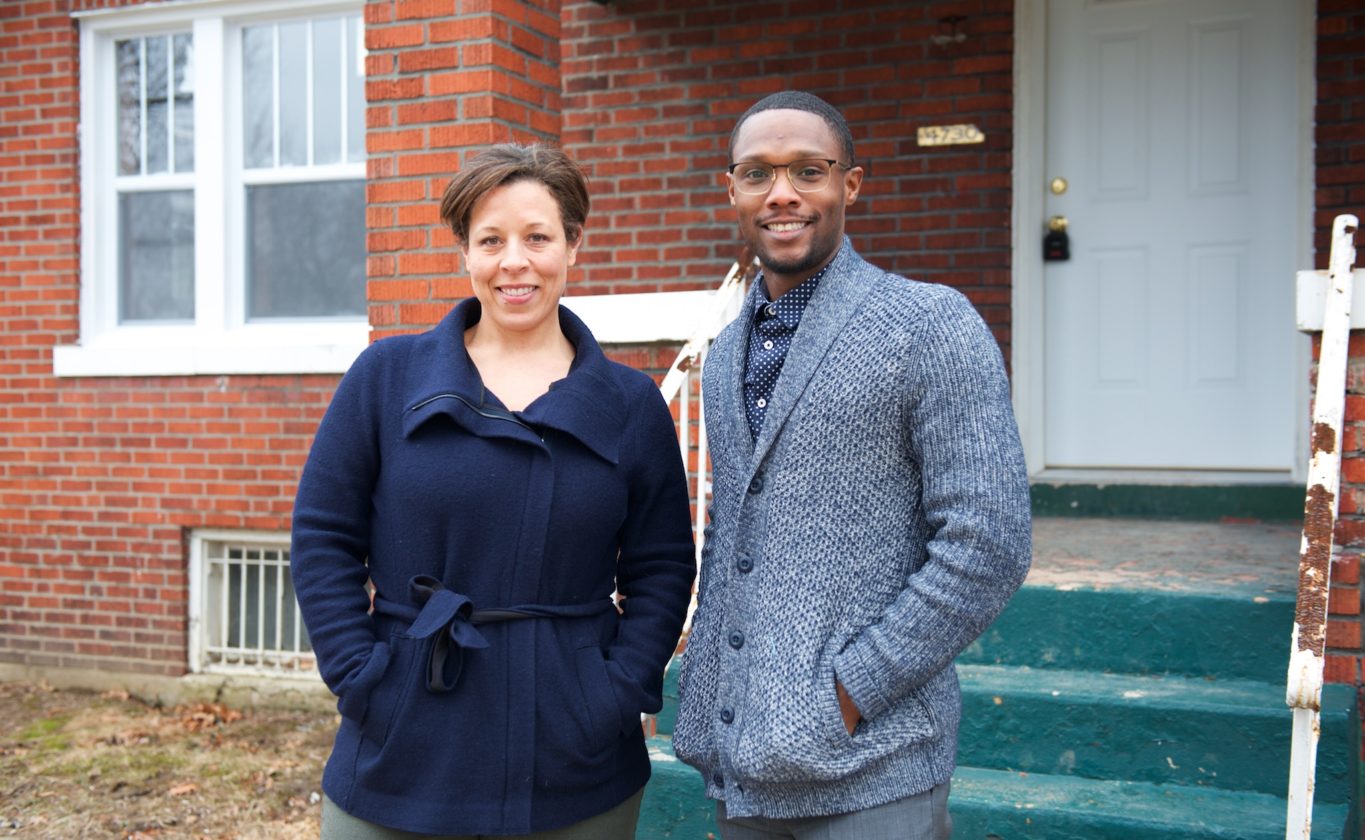This is part of the #STL2039 Action Plan storytelling series in partnership with Humans of St. Louis.
Stephanie Grise: I am an attorney my client is the Community Development Corporation (CDC) at US Bank. I’ve been with them for about five and a half years, serving as their in-house legal counsel, doing all sorts of law-related things. A few years ago, I got involved with the business’s equity agenda – the diversity, equity, and inclusion council – as a legal advisor to that group and also to sit on the equity agenda committee with business leadership to talk about equity and inclusion. We try to create more access to opportunities within the business, but also within the communities we serve. I’m also a part of the law department headquartered in Minneapolis. My manager is there, the team I work with is there, and I’ve been more involved on the periphery of their diversity efforts.
I’ve experienced a lot of emotions doing that work because they’re in Minneapolis where they just don’t have the same racial divide that we have here. There are a lot of different demographics represented there, the power dynamic is different, the level of investment and institutional change is different. I’ve appreciated having knowledge that I’ve gained being here in St. Louis in the CDC. It’s given me some leverage and some language to use to give feedback in those circumstances when the law department is making statements and developing policies and programs that don’t have the impact that they’re intending.
Before that, I was in private practice for almost nine years. I’m originally from outside Seattle and I moved here in 1999. I’ve known Neal pretty much since I started at US Bank. We were just talking about that because I remembered meeting him coming out of an elevator, and he was just there smiling. He had been with the bank for less than a year at that point, and we just stayed connected.
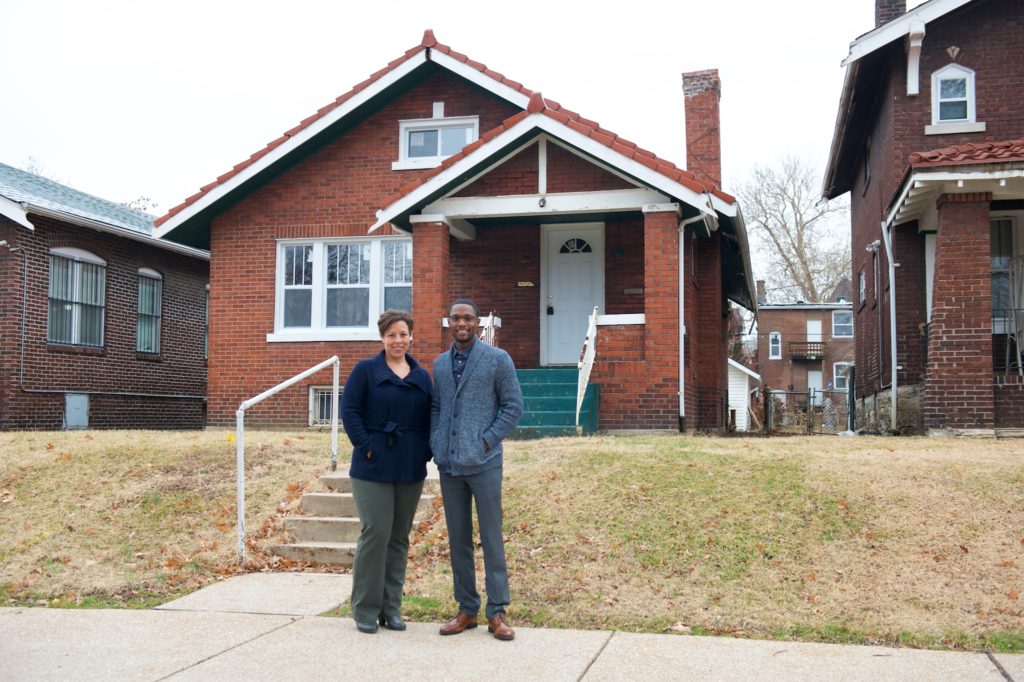
Stephanie Grise and Neal Richardson. (Photostory by Lindy Drew/Humans of St. Louis)
Neal Richardson: She’s been a great resource and mentor for me in my career as I’ve grown within the bank. I came from a commercial real estate background. I’ve been in St. Louis my entire life. Born and raised. My parents still live a street over from the house we photographed at. I used to ride my bike up and down that street, back and forth. And I used to wash cars at a car wash right up the corner. It’s always great for me to go back and remember those experiences because I live outside of the community now. Going back to see all of the disinvestment that’s happening there is very concerning, especially knowing that there are so many resources available. It is intentionally, and unintentionally, through policy that investment hasn’t gotten down to that area as much as it’s necessary.
Seeing the development happen on the other side of Delmar is concerning and trying to find ways to bridge that gap is important, not only for the real estate side of it but also for the people. So, during my role at the CDC, I started as a financial analyst, understanding the financial and compliance side of the investments that we were making in these communities. Then I moved on to the project management side where I was underwriting some of the investments that were being made and understanding the parameters for which developers or our business partners needed to meet in order to qualify for their investment from US Bank for these new market tax credit and historic tax credit projects.
But a lot of things I started to see, even as we started to build out our diversity, equity, and inclusion council — which I serve on as one of the founding board members — is the lack of understanding and proximity to the people in those communities. And because I come from the community and I have strong roots and connections there and share those experiences with the people that currently live in that community to this day, it’s important for us to understand the human aspect of it and the impact that our investments make on the people and not just the buildings, the real estate, and the property.
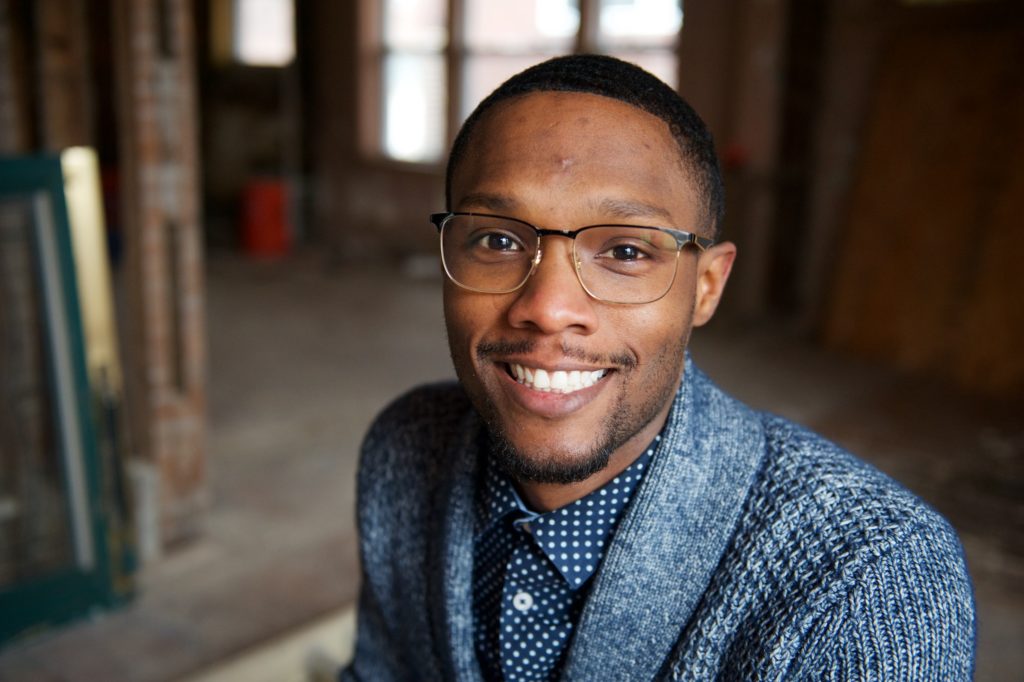
By starting Dream Builders for Equity one of the first things I was able to accomplish was to bring some of the students from one of the most distressed high schools from low-income communities, in which we make investment through the CDC, and introduce them to people that work on these investments. So we engage the people more and question, “Are we doing enough with our investments or with our influence, with our resources to actually impact the people that live in those communities? Are we providing them with the necessary resources to mobilize outside of poverty, or are we just giving them a better place to live or a roof over their head? These are important, but what other resources can we provide?” The only way we’ll be able to identify that is to have proximity to the people and to the issues that they face every day and being able to recognize the influence that we have to change those human aspects of it outside of just the real estate and asset building that we focus on. In order to create sustainable communities for our investments to really have the lasting impact that we hope for, we need to be able to transform the people and create opportunity for them to have access to greater opportunities as well.
Are we doing enough with our investments or with our influence, with our resources to actually impact the people that live in those communities?
What does it mean for the people who work for your institution to then meet those youth when they come in?
Neal: It’s important because they don’t see them every day. They just see the investment. They see that kids are walking into new housing projects. But to hear some of their experiences of their parents who have to give 80% of their income towards housing, and that they don’t have enough left over to buy school clothes or the basics… Some of the students through the Dream Builders program receive paychecks and the students were giving their parents that money in order to pay the utility bills. It’s not for them to go out and buy clothes and enjoy the things a typical teen would have, like saving money for a car. They have to actually help contribute to the utility bill. They have to help contribute to making sure that there is gas in their parent’s car. And it’s a tough reality for them when they’re working to pay for necessities around the house instead of being able to enjoy being a kid and learning and saving up for their first car.
So having proximity to those issues helps the people at the company realize that there’s more to it than just providing a house or a café or commercial projects. It’s providing resources to help the youth be prepared to take advantage of some of that investment, whether it’s through education or other resources. We have a clothes closet we provide in some of our low-income housing projects just to provide extra support. We do Toys for Tots campaigns for people who live in these housing projects so they can have a great Christmas. Those things are just as important if not more than the investment we’re making in real estate. Just making that clear and keeping that present in our conversations is something I definitely want to take responsibility for when I walk into our meetings and we talk about investments into many of these communities.
When both of you started working at the CDC compared to now, how has the way the company addresses Racial Equity changed over time?
Stephanie: It was just a standard corporate environment when I started. The bank had a diversity statement. They talked about it as something that had to be done as an initiative. As Zack Boyers, our Chairman and CEO, has really made it a priority, it has become more of a part of the language that people use. People are interested and engaged in learning more. Those who are close to the deals, like Neal said, they want that next connection because they’re smart people. They know that you could just view those as a financial transaction, but they want more. They want to be in the deals. They want to see the impact. They want to see what these types of projects and these investments mean for people.
So people within the organization are taking advantage of the opportunity to learn, to grow, and to talk about diversity and race, specifically, as well as ethnic diversity, religious diversity, gender diversity, and all of those things. To be able to talk about them surrounded by resources, and to talk about them in a way where people know they’re not going to get penalized at work for sharing, that has been a big change I’ve seen.
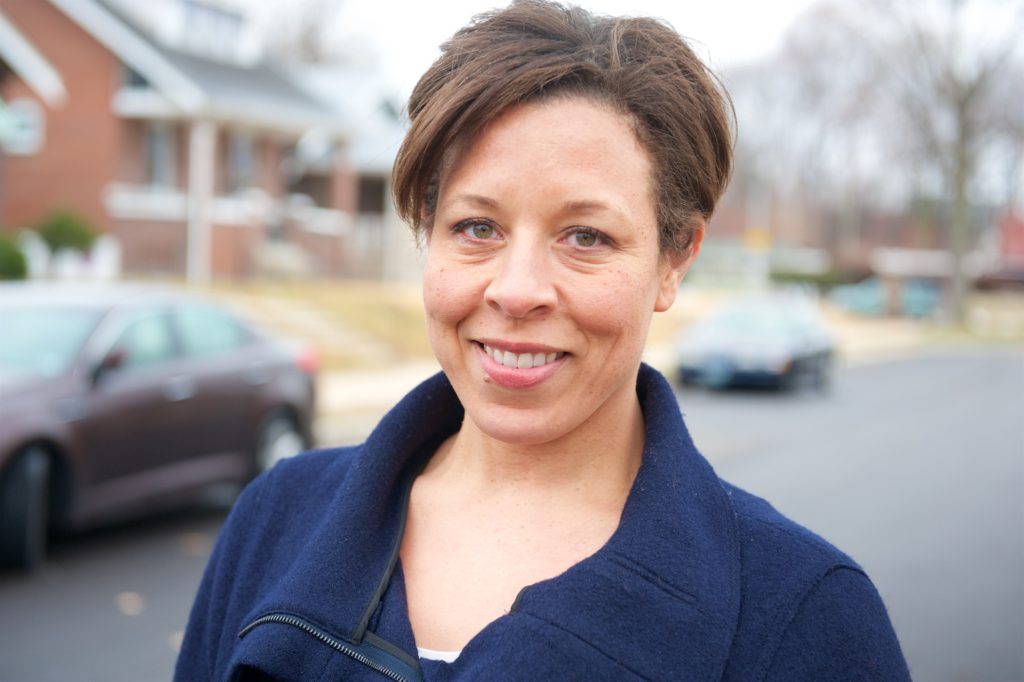
I always talk about myself as an outsider because I work for the law department. I don’t work for Zack Boyers, the CEO. I don’t work for the CDC. So I try to watch, absorb, listen, and learn. What I have heard and seen is that we are at a point where people love and appreciate the conversation and the opportunity to grow. They are taking these learnings back into their homes, their communities, and their friendships and sharing. And, when we can take a risk that results in us changing the way we approach a deal, one deal, and where we can spend money, maybe spend more money, to do something that has a very clear, visible impact with respect to Racial Equity, that is something different, and new, and really impactful.
That’s when we’re going to bring over a group of people, not a huge group, but a group of people who are waiting for the big thing that changes the structure of how we do stuff and not just the optics of how we do stuff. There’s a group of people waiting for that and I think we are close. We’re getting there. We are much farther along than we were when I started, and the law department is, too. The law department is also trying because we are the buyers of legal services. We are the ones who are in the position to use our money to influence change with law firms and other organizations we work with within the legal industry, for profit, and nonprofit, and we need to embrace that.
What’s an example of that progress that you’ve made versus where there’s much-needed work to be done still?
Now we all have that shared language. So when we talk about inclusion and diversity, we’re able to clearly communicate
Neal: One of the more evident things that we’ve implemented lately is the Crossroads Analyzing and Understanding Systemic Racism trainings for not only us as an institution, but we’ve opened up the opportunity for employees, our business partners, and our customers to take part. Now we all have that shared language. So when we talk about inclusion and diversity, we’re able to clearly communicate, and we’re not starting from a place where we don’t understand what that is or what that means. So when we talk about selecting a deal that has a direct impact on income inequality in low-income communities, our partners now have a better understanding of what that means.
This is not just lip service and if you want to continue to do business with us, this is an expectation from what we want.”
So saying, okay, we’re targeting this project because it has a focus on improving their income and equity in this community. We’re tracking similar data points. We’re able to understand the social impact so we are more aligned when we go into a community. We have partners that are able to back us up, so now we’re creating capacity to really create big change not only within our institution but within the entire industry. So having those systemic racism trainings to create that shared language and also communicating to our partners, “This is something we not only are speaking, but we’re putting resources in them. We’re actually taking action to make change within these communities. This is not just lip service. And if you want to continue to do business with us, this is an expectation from what we want.”
It would be phenomenal if other organizations had the funds to be able to put everybody through Racial Equity and anti-racism trainings. Who or what group in the institution made that possible for you to take that route?
Stephanie: Zack.
Neal: That’s the biggest thing. With a lot of this work that’s happening, Zack has put his name and brand behind it. Who he is as the CEO of the CDC, he’s saying, “This isn’t something that only big institutions are committed to, but this is what I’m committed to as a person.” So people can’t challenge that. He’s authentic about it and brings that authenticity to our brand as the CDC to say, “This is what we care about. These are our values.” And because Zack is a big proponent of that within the community and advocates for that, they know it’s real. He’s out here serving on boards, marching, and being the leader with action, not just directing others to do things. He’s actually out there and putting himself out there. That’s very important for people that support him, and also people that are afraid to take action say, “If Zack can do it as a leader of this organization, this banking institution, then I can do it in my role.” So it’s very important to have leadership not just talking about it, but actually backing it up with the work and being committed to it themselves or advocating for resources to be spent there.
We have a strategy employee experience team that wasn’t present when I first joined. It’s been maybe two or three years since it started, and now they’re focusing on, “How do we create a culture of diversity, equity, and inclusion within employees? How we have conversations with one another? How do I feel comfortable bringing my full self to work?” That was all because Zack advocated for that position to be created. And because of that, we’ve been able to take steps. We’re able to see things come to life because instead of someone from our role saying, “These are the things we need,” he can actually put them into action now.
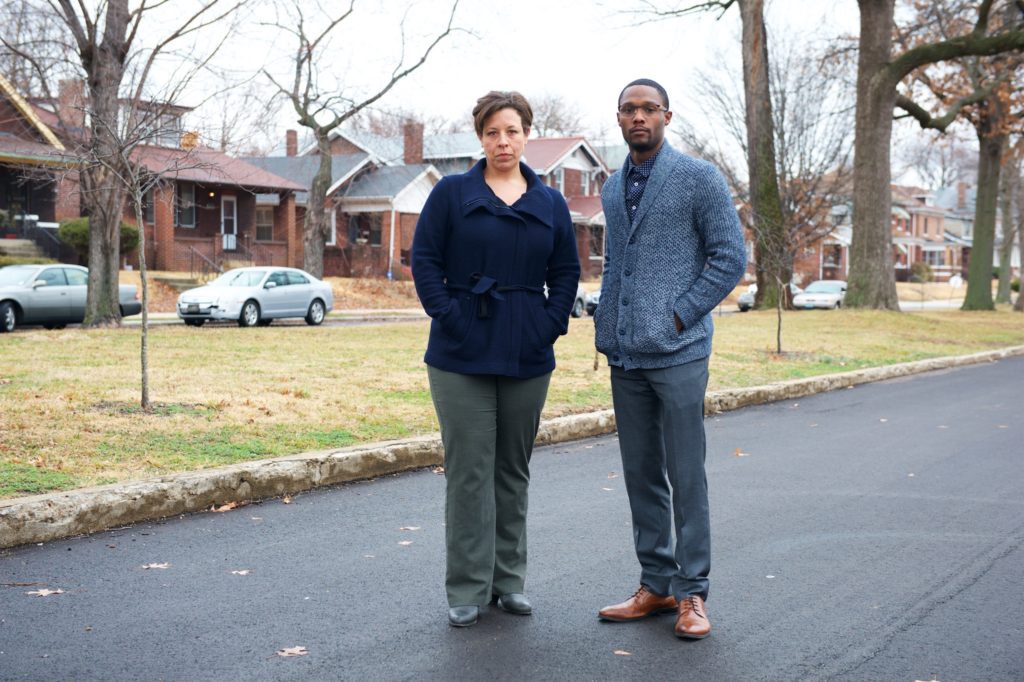
It’s a struggle, for one, being a person of color within the organization, and then being in middle management advocating for something your leader doesn’t necessarily believe in or understand. But because he understands the issues, it’s easy to have a conversation with him and say, “This is what I feel is important for the organization to move forward. This is what’s important for me as an employee of the organization.” For him to have at least the capacity or desire to have those conversations openly, creates more engagement for me to want to move the organization forward, or have more conversations with other employees about what are programs or things that we can do to create awareness of the need for this, internally and externally.
It would be great to get your perception as a person of color working in a White institution.

Stephanie: I’ll start by saying I have only ever been a person of color in a White institution. That’s the only experience I’ve ever had, so it is what I am socialized around. And being socialized in that, I have been conditioned to believe that it is all just window dressing. So that is challenging because we’ve put a lot of energy and effort into delivering the message and getting passionate and feeling like we’re being heard and feeling like things are moving. And then it gets hard because that’s what happens. It always gets hard. And there’s always the resistance.
There’s always comfort with the status quo. What is the term from the Crossroads training? The ‘gatekeepers.’ The people who say on behalf of others, “This is too hard to do.” That’s still there. We’re not past that. Like, when you asked the question setting up what does a Racially Equitable community look like? It’s a situation where we can make decisions because it’s the right thing to do for the stakeholders involved. We shouldn’t be avoiding things because they’re too hard. Everyone should be willing to do the hard work to make it through to the other side where it’s better and easier for everyone.
We shouldn’t be avoiding things because they’re too hard. Everyone should be willing to do the hard work to make it through to the other side where it’s better and easier for everyone.
So doing all of this work in a White institution, from my viewpoint as a person of color, I appreciate the effort. I appreciate the conversation. I feel safe in my ability to say and do and be direct around these topics. I feel equipped to have them in substantive ways. And I also have experienced and have assumed that it will eventually get too hard. There are times where they’ve already said, “It’s too hard. Or, it will be too hard.” And that is what frustrates people of color. Because I can’t speak for everyone, but people I’m in relationships with, we want it to not just be an add-on or an initiative or an activity or the next shinning penny being chased around. We also know that, at the end of the day, if you’re in a White organization that has White leadership, maybe you have one person who’s engaged and committed and open, but you’re not going to have a critical mass of them. Then what do you do when it gets hard? For me, just emotionally when I have the hard days, it’s around that because something got too hard. And it’s just frustrating.

Neal: Also, being a person of color and knowing that this White institution is saying this is something that they care about, you see this as an opportunity to bring forth ideas and suggestions and ways to move the organization forward towards what they say that they want to lead into, but then getting that resistance of, for example, something Stephanie spoke to of, “I don’t know if that’s the way that we should go about doing it.”
Stephanie: Because they are defining success, right? That’s really what it comes down to is who’s defining success? And if the White institution is defining it, then is that really serving the people?
Neal: Exactly. So it makes it difficult when you, as a person of color, know and you’ve seen – through lived experiences or challenges – that this is one way that we can make it easy for us or people in the community we’re serving to become more successful or live into their possibilities. It’s challenging when you get pushback and resistance around that because you’re taking on that work, you’re taking on those risks, and you’re pushing people who don’t care about it within the organization because they’re so focused on meeting their objectives and business goals that you feel like, “I have to do that, plus this other stuff” that you don’t necessarily get rewarded for. It’s taxing on people of color to push these things forward, and you don’t get recognition, and you continue to get resistance on some of it. It’s difficult to stay inspired, to stay excited about this type of work because sometimes, is it even worth it for me to continue to fight for things that I’m going to get resistance on from this White institution to get recognition, to appear as though they’re doing something that they care about, or say that they care about?
Can you share two different perspectives of what it looked like when that was really hard and you couldn’t get over the hump and what it looked like when there was movement and it was successful?
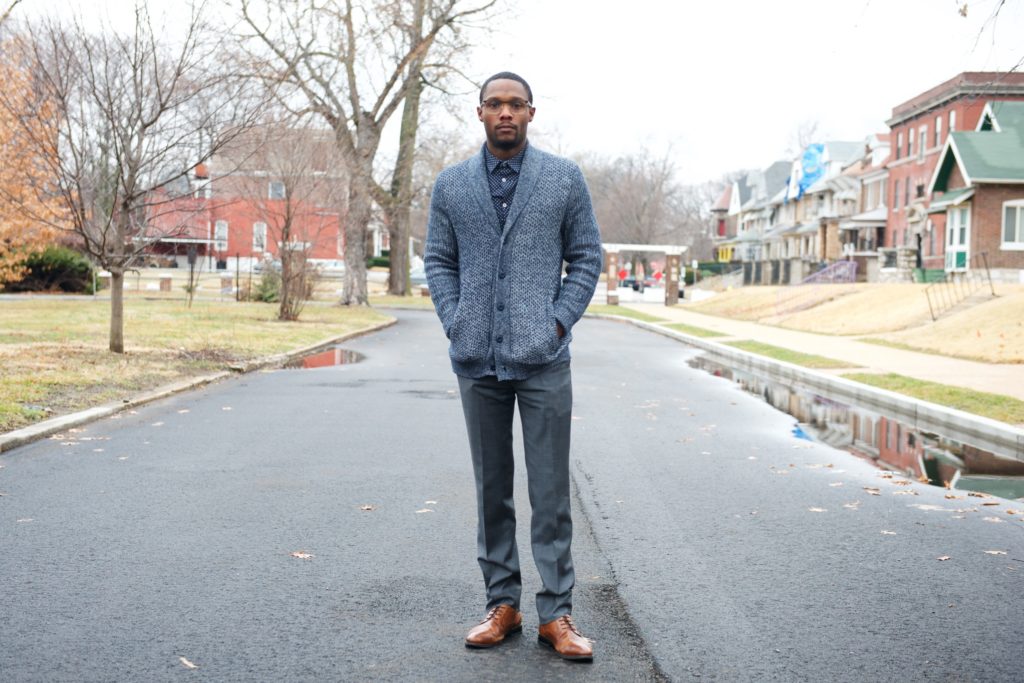
Neal: I can use a general reference of that, without getting too specific. When we look at some of our transactions, especially when I was on the underwriting side of the hours, the challenge is always being comfortable with the risk associated with the deal. A lot of times they looked for everybody to check certain boxes. To say, “It has to meet this criteria, it has to have ‘X’ number dollars and cash flow, all of these things,” and saying, “Well, what about the social impact of this investment? What if we changed some of that because there is a bias towards a certain group of people and while the …” I may feel like it’s important, we have to get approval from the entire organization and say, “I’m comfortable with taking on, not even the economic risk, but the reputational risk behind it.” Getting pushback, they are saying, “This is not what we typically do. This is not what we typically accept from a deal.” And being able to say, “Well, maybe we should. Not on this, but let’s find another way to make it happen.”
It’s the challenge of dealing with all the parameters of working within a bank to make the social impact that we’re seeking. While I think we care and we try to identify opportunities in innovative ways to make money, how do we spend just as much energy on being innovative and creative about that impact and spending our resources there as well? There are definitely things that we’re moving on – creating data around some of them, estimates they were making – but being clear about how we’re going to change the system once we identify those findings is something that I’m interested to see. Without getting too specific, it’s the challenges of dealing with the gatekeepers when it’s time for those tough decisions because you have to have buy-in at every level.
Stephanie: I was just struggling with the success story type half of the question because we have a lot of examples where a lot of things have happened, there’s been a lot of movement, there’ve been a lot of conversations internally, people have tested and developed and built out different processes and new approaches. And like I said earlier, until we get to that point where we’re over the hump of having to burn so much capital to convince somebody to do something that really has no risk, but is a different ask – until we stop thinking about that as, “How many chips am I going to have to give up to get this done?” until we can get beyond that, it’s hard to think about what the example is of when it works.
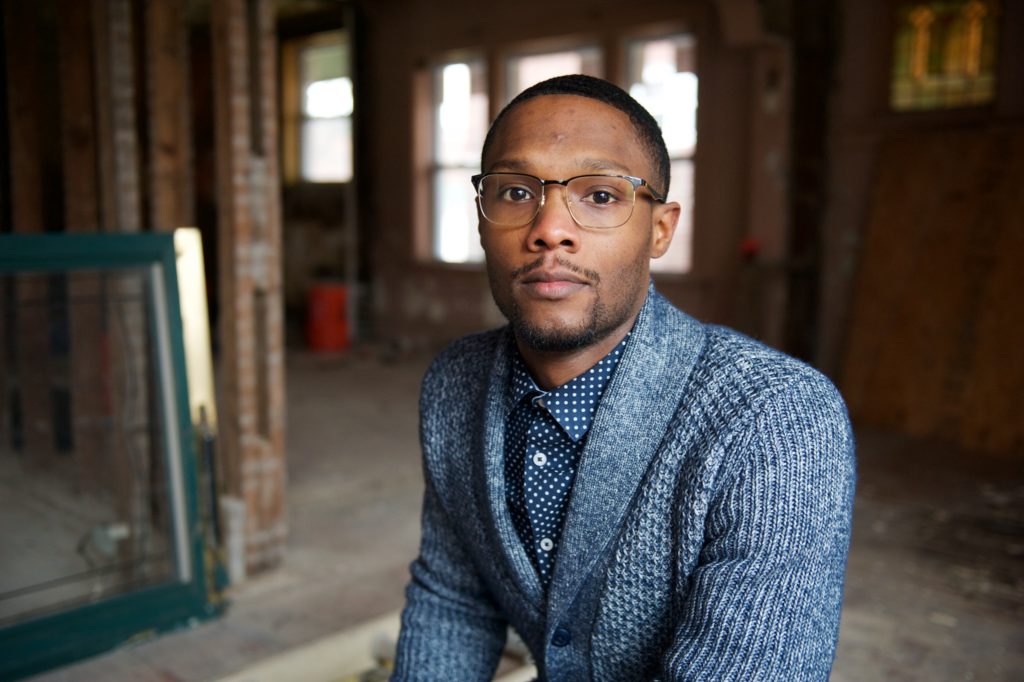
Neal: There’s a cost-benefit analysis in every decision that’s made within the bank. Having a nonprofit, you’re focused on your mission first and then making money or fundraising. While it advances the work, it advances your mission, and it allows you to continue to do the great work in the community. I feel at any institution, although it’s almost the opposite, we’re trying to figure out how we can make money to do good, especially at the CDC. How do we continue to add bottom-line revenue to the bank in order for us to do good with it?
There’s a cost benefit analysis in every decision that’s made within the bank.
It’s money first, then mission. And we’re trying to align both together. That’s the challenging work of our senior leaders, Zack, and even in people at the higher levels of the bank. How do we align the profit with the impact? But, again, when you have shareholders and other people that are depending on you to continue to run your business, you need profit, you need revenue, you need all of those things to attract top talent at a banking institution and keep the wheels moving. Then the impact falls off when you have to spend so much time figuring out the money side of the equation.
What would a case study look like to be able to follow people who are doing this work throughout your institution to then look back and say, “This is what it took or this is what we needed.”
Stephanie: CDC has been hosting the anti-racism trainings. They’ve been inviting community development partners. So they will invite in affordable housing developers, and consultants in this space, and law firms who do tax credit work, which has been fascinating from my perspective because I’m a lawyer and the legal industry is one of the institutions that we talk about with the center and borderlands and building the walls and keeping people in and out. That’s us. Lawyers. We do that. Rich White men have created that system, and have profited off of that system, and have kept people of color disenfranchised by and victimized by that system and out of that system for centuries. All those laws that are on the wall of history, our industry did. But we play in this space because we need sophisticated tax lawyers to document these structures and they better get paid their several thousands of dollars worth of legal fees.
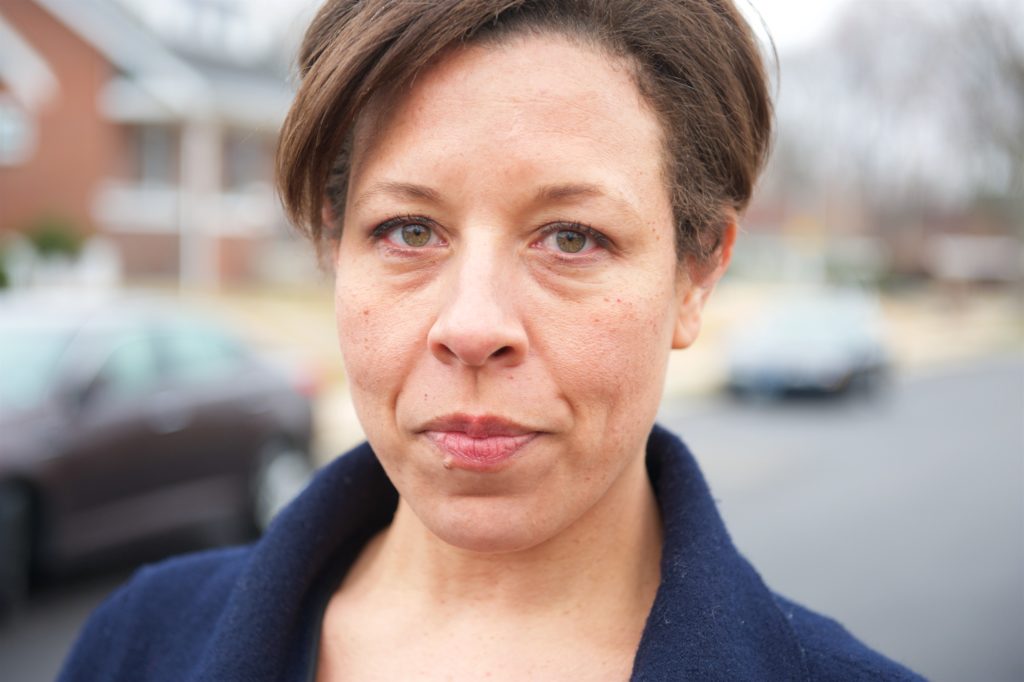
It’s fascinating because we play a really interesting role and we, as law firms, are competitive, instead of collaborative with one another. To be in these conversations together, I’ve really enjoyed watching it and being a part of that. You think about that and about how when we’re in the analysis workshop, and we’re talking about institutional racism, that it’s not one institution and it’s not even one industry. It’s how one industry plays with another industry that plays with another industry to build this system. We, in some ways, as participants in the community development industry, have built a system that makes sure the bank makes its money, makes sure the developers make their money, and ensures that the people who live can’t generate wealth. Can’t save. Can’t buy. They are part of the system that keeps the White institutions wealthy.
It’s not one institution and it’s not even one industry. It’s how one industry plays with another industry which plays with another industry to build this system.
The fact that we’re inviting folks into this space to talk, that we are having twice a year follow-ups with those organizations saying, “What are your action items? What’s the progress you’ve made? Here are our action items. Here’s what we’re doing.” We’re convening that and creating some cross-institution accountability for our industry. There was a summit in the fall. The first summit that the CDC convened where they brought partners in who had gone through anti-racism trainings to talk about, “What can we in this room do together? And how are we going to check in against those things to make change?” Because, again, it’s the deals that come to us, too. What kinds of biases are in place when they screen the deal before they even come to us to talk about the money? How have you already screened out the consultants? How have you already decided and applied bias to decide who you’re doing work with? Then, what biases and processes have we applied in selecting our ideal team and in making the ultimate investment decision? The fact that we are having these kinds of industry-wide conversations, that is something positive and it has the potential to be deep if we keep it going, and if people stay interested in it long enough.
How have you already decided and applied bias to decide who you’re doing work with?

ArchCity Defenders has come in through the training and they see all this stuff from a legal perspective and they understand. Their clients live out the wall of history every single day. And although it was founded by three White men, they understand and are just deeply committed to breaking down the institutions. They completely admit and acknowledge that the system is broken and they poke at it every single day to try to break it down. They do it because they are a nonprofit, their number one focus — just like Dream Builders — is their clients first, and every time with this laser precision. Because that’s what motivates them, they will go and do the hard stuff. They will have the hard conversations and take the calculated risk to make change. Not everyone has the ability to do that. But at least having the conversations and naming it as something they want to try to address is important. And the fact that we’re convening these conversations and putting ourselves out there as an accountable body is important.
Knowing how you became comfortable to contribute in the way that you do, how can other folks think courageously about incorporating Racial Equity into their institutional DNA?
Neal: That’s tough. It takes some leadership from leaders within the organization. Stephanie spoke to this earlier, to have that safe space to be radical and have these radical conversations, these bold conversations, these honest conversations about race, and about the root causes of segregation and disenfranchising people of color, and not only how that has impacted the history of it, but how that impacts us today. I don’t want people to lose sight of that. In order to have those conversations though you need to have a leader who creates the space, you then need context throughout the organization of history about these issues, and then some motivation and inspiration from everybody who’s currently working in the institution to work towards it and not continue to set up boundaries and barriers for success to happen. And to recognize that and speak openly about it when something is unacceptable in the workspace.

We’re creating boundaries and barriers for movement of this work. It’s not that the people don’t have the ability or capacity to move the work forward. It’s the resistance of allowing for those who care enough and commit their time to it to actually see progress, to see action. Being able to counteract that, you need strong leadership to say, “That is unacceptable. This is the culture. And no matter how great the work is that you do, it’s part of being a successful organization. And part of working here is being committed to advancing communities, being inclusive, improving diversity and inclusion within the organization, within the communities in which we invest. It’s how we do business. Anything else is intolerable.” You need to make this part of your work every day.
It’s leadership, having context, and having everyone in the organization moving towards addressing Racial Equity.
We have instituted diversity and inclusion goals within the CDC in which each manager has to have some D&I related goal. That is very important, but it’s also holding people accountable. That strong leadership has to create a system in which we hold people accountable for actually advancing the work forward and not creating those boundaries. And having a policy where people can speak to them and speak openly to address things like, “This person has, through micro-aggression or whatever it may be, put up resistance for me to move the work forward around Racial Equity within our institution and in our communities.” That’s really where it starts. It’s leadership, having context, and having everyone in the organization moving towards addressing Racial Equity. Because it only takes one person in a lot of cases to shut down everything or to push back. If you have hundreds of people working towards something else, it is very frustrating when we’re having conversations about how to move the work forward, and then it gets to a certain point, and it’s shut down or there’s that resistance around it and that just stops the momentum for continuing to move forward.
Stephanie: I hear all of the things that Neal’s saying about moving forward and obstacles. As I think about the earlier question about what it’s like being a person of color in a White institution, and I think about the progress, I get frustrated. I also know if we stop, they’ll stop. Because White leadership will look for, “Hey, if the people of color don’t want it, they aren’t engaged, why bother? Why should we do it? Well, we gave that person of color and opportunity and they botched it, so this obviously is not working.” We have to play our role to engage, but not do their work. We have to do our work and keep moving things forward. You’re right, because it is much easier to stop and say, “It’s too hard.” So we have to just keep it moving.
I get frustrated. I also know that if we stop, they’ll stop.
What have you heard from the people that you serve, the ones benefiting from these decisions that you get to make? Have you had of experience that’s touched you in particular?
Stephanie: I am not close to the deals, so I don’t have a ton of experience with that. But I do know that one concept that we’ve been working on is around tribal sovereign immunity, and doing work with tribal partners. We’re being more thoughtful about how we engage with tribes and how we underwrite them as sovereign entities. We’re making sure that we’re giving due respect to their constitutional rights and their independence. It’s an adventure that we’ve been on for the last couple of years, testing and revising the process, and then testing it out with different parties, and we’ve got further than we’ve ever gotten before in that process with a deal, just thinking about systemic change and what all is required to do something new.
We’re still in that process with them, and we had to have a frustrating conversation and say, “We’re not going to be able to do the things we talked about right now. We’re going to have to move forward with plan B and still keep talking through plan A.” I’m in my emotions over this whole situation, but last week I was in a conversation with the outside counsel for the tribe that we were talking with. He very genuinely appreciated the fact that we were even talking about it – that we had built the process out, that we had socialized, that we had been thoughtful, that we had vetted it through all sorts of legal channels internally, and that we had talked through the process with consultants for tribal partners.
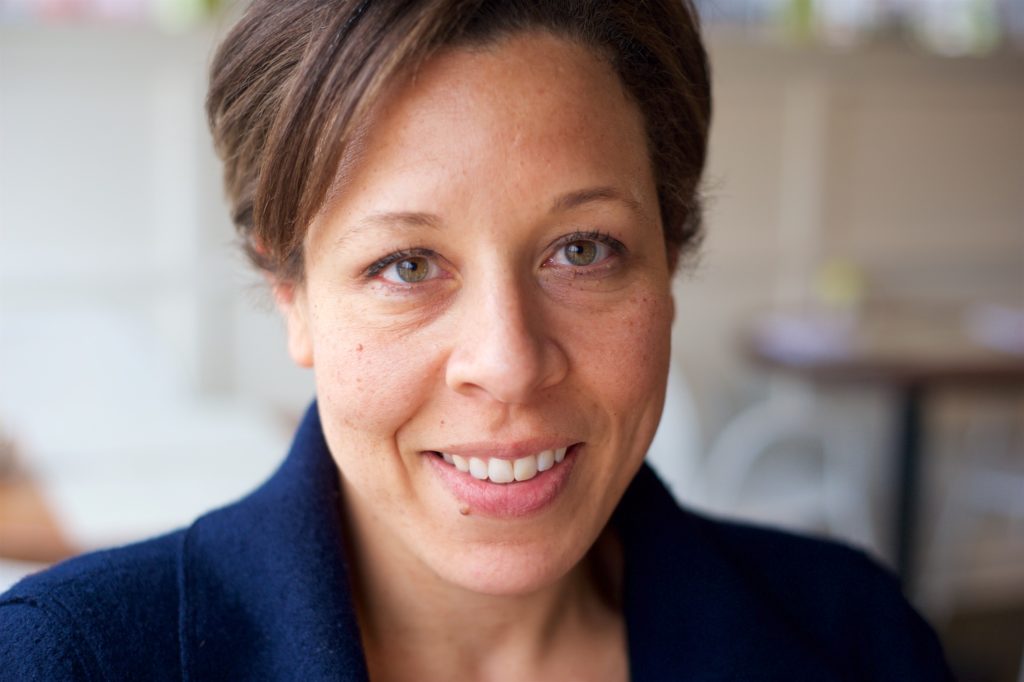
He said, “Stephanie, you and I are going to solve this. We’re going to do this.” He was frustrated, which we all were, but he didn’t want to stop. He wanted to keep the conversation going, like, “We’re going to figure out how to get this to happen because this is something that no one else is doing. This is something that banks are not doing. Just the idea, just the thought that you are willing to discuss this with us, and that you are willing to look at us and really recognize our sovereignty, and to acknowledge that, and participate in that, and see us as a peer in your transaction…”
It’s going to take courage. It’s going to take risk. It’s going to take knowing your shit, so that you can tell the story. Excuse my language.
It gave me chills to have the conversation with him because even though we weren’t delivering great news, he wanted to keep going. I’m like, “Let’s keep going. Let’s do it!” That made me feel good, and I want to believe that we’ll get there. That’s my growth mindset. Emotional roller coaster is such an understatement of how I’m feeling about this whole thing, but I want to believe that we’ll get there. It’s going to take courage. It’s going to take risk. It’s going to take knowing your shit so that you can tell the story. Excuse my language. Yes, we’re definitely going to do this. So that kind of stuff I hold on to because that’s the part that’s in my control. I can’t control how long it’s going to take for the right people to have the appropriate conversations, but I can keep the conversation going with him.
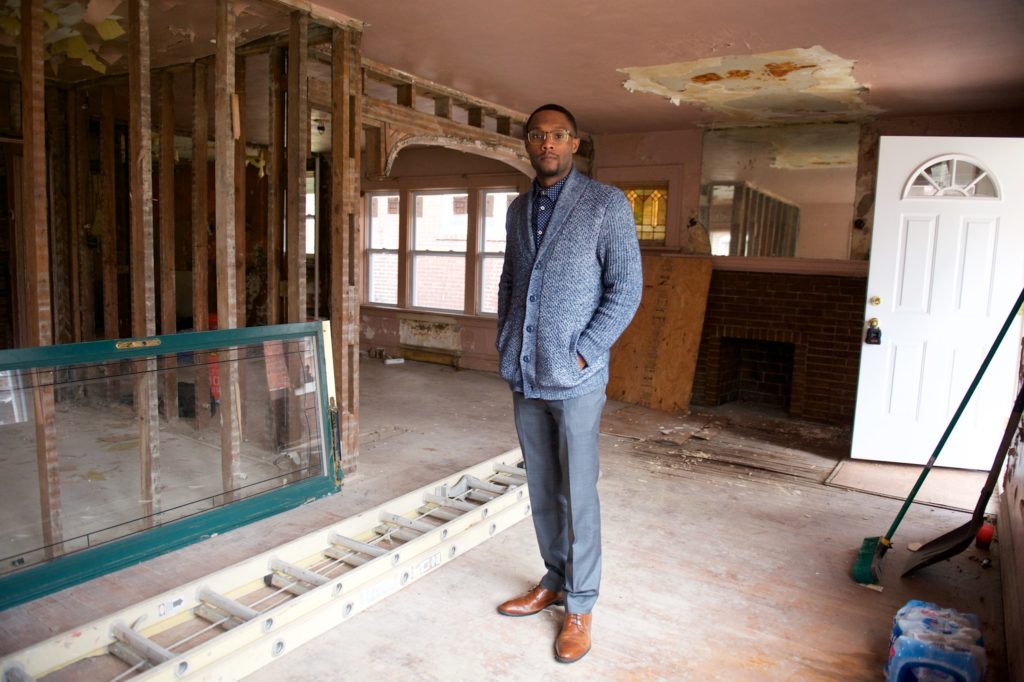
Neal: That’s the biggest piece. Because it’s so near and dear to us, it’s something that we are so passionate about, and part of the fabric of who we are and what we represent. Even if we tried to stop, we couldn’t. With Dream Builders, it’s so difficult. I’m working at US Bank all day and then I have this nonprofit that I’m building from the ground up and it’s a lot of work. It’s stressful. It’s taxing. I have a two-year-old daughter, so I’m taking time away from her to work on this for the community and for the youth to actually benefit and be part of the change that’s happening in their community and be prepared to advance as their community advances. It’s something that I would do anyway. I continue to push forward no matter what, whether it’s within the institution or outside because I feel like the institution wasn’t ready to move in the way that we’re able to as far as being able to address some of the direct needs of the people in the community, so I had to start my own nonprofit.
And now I’m able to show how conversations with the bank end at the same place. These are the real-life experiences. These are the real-life people that are being impacted by our investments in these communities. How do we make sure that they are the ultimate beneficiaries of this investment? Because this is what they look like and this is what their experiences are. We provide them with the cultural enrichment, personal development skills, financial education, job training skills, and they are going to not only be appreciative of the opportunity but be able to advance and create a society and economy that’s more robust for the benefit of everyone.
My biggest frustration is when people put up these barriers and boundaries. It’s so short-sighted because investing in these communities and these people today create a better economy. It creates better opportunities, better innovation when we have opportunities for other people to come into industries. It just creates more success for us as a country, as a people, as a world. For them to put up boundaries because they want to hold on to their piece of the pie, instead of making the pie larger for everyone to eat more of it, that’s where I get frustrated. It’s like, “Why are you setting up boundaries for you to have this little piece when you could actually have more? You may not have as much control, but you have more of it, more success, better relationships.”
For them to put up boundaries because they want to hold on to their piece of the pie, instead of making the pie larger for everyone to eat more of it, that’s where I get frustrated.
I’m a visionary at heart, which makes it difficult for me because I want to see everything live up to its best potential. Whether it’s an individual or a community or the world, I just want to see the best for everyone and for them to live out their dreams and live to their fullest for themselves. That’s what I believe in as a person. So no matter how difficult, no one person can try to stop this piece here. I have another piece that I’m working on or another relationship that I’m building to create the impact that I’m seeking to achieve in the world.
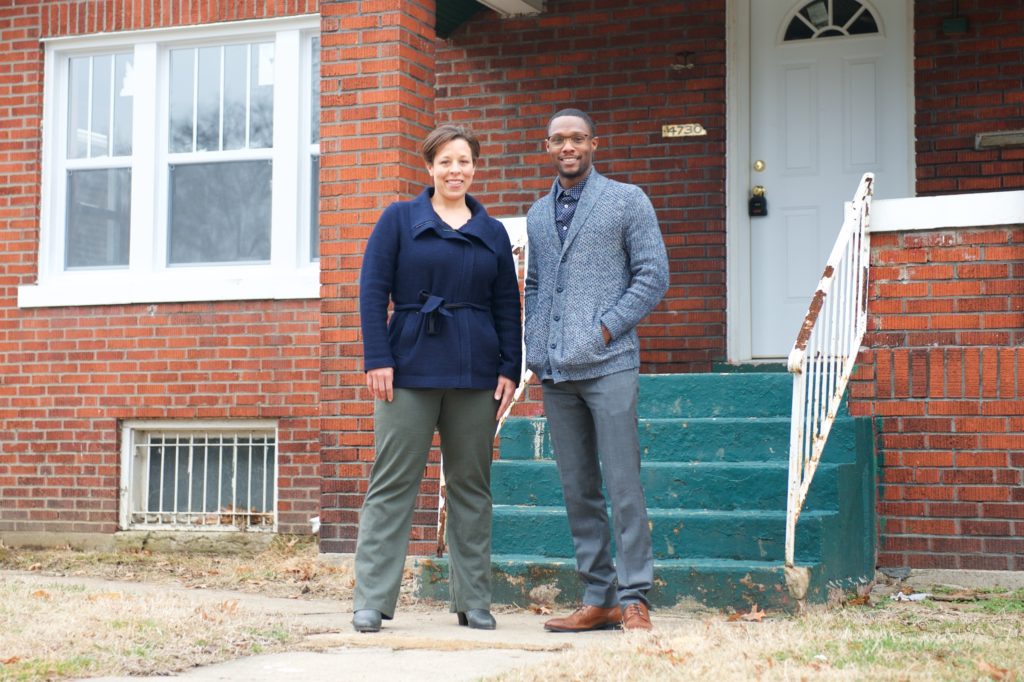
Stephanie Grise and Neal Richardson. (Photostory by Lindy Drew/Humans of St. Louis)
Stephanie: None of your other interviews are going to be as good as this one.
You guys set the bar really high.
Neal: It’s too high.

